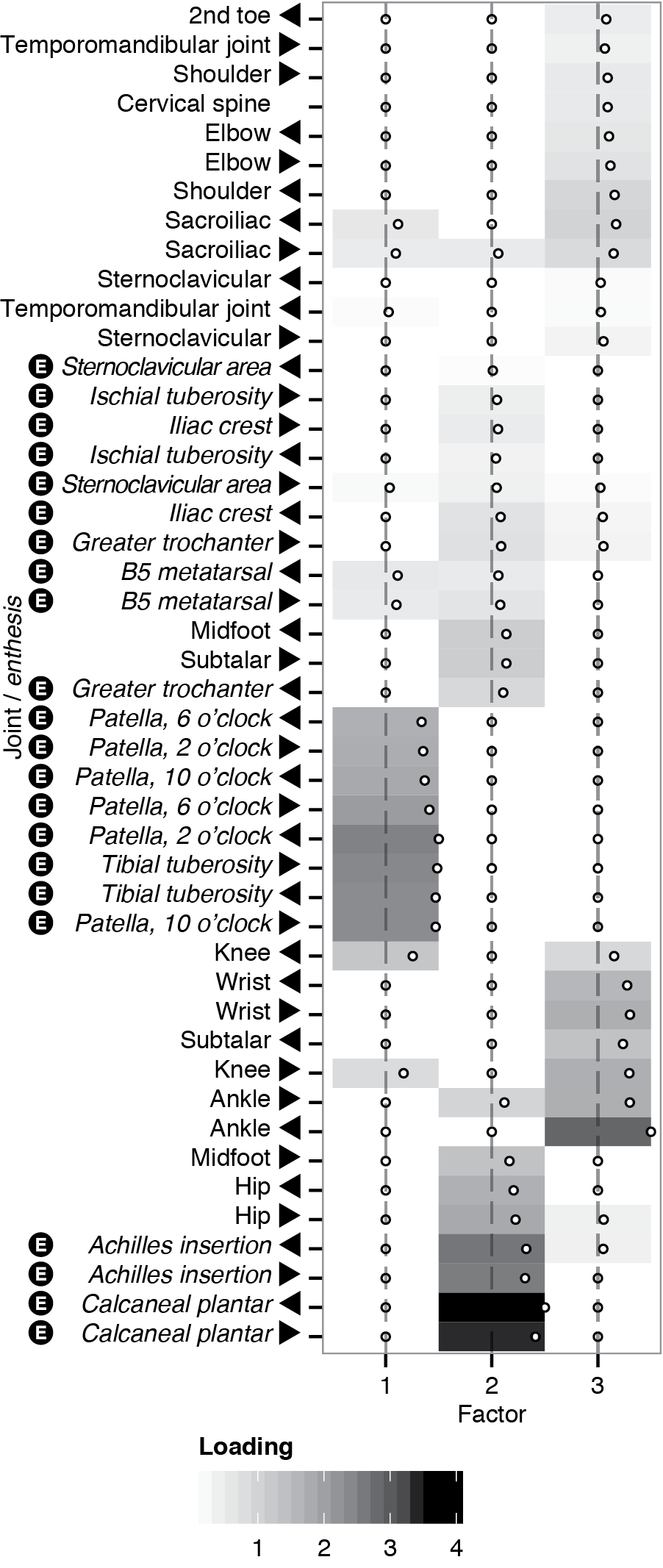Session Information
Date: Monday, November 9, 2015
Session Type: ACR Poster Session B
Session Time: 9:00AM-11:00AM
Background/Purpose: Juvenile idiopathic arthritis (JIA) encompasses a heterogeneous
group of diseases characterized by chronic joint inflammation with presence of enthesitis as an important classification
criteria. Although joint count and enthesitis are represented in the
ILAR criteria, their pattern is not taken into consideration. We studied these
patterns using data-driven pattern recognition techniques aiming at identifying
homogeneous subgroups of children with JIA and enthesitis.
Methods: We included 116
patients from a Canadian multicenter prospective inception cohort. Inclusion
criteria consisted of a diagnosis of JIA according to the ILAR criteria <3
months prior to study entry, treatment-naivety except for NSAIDs and enthesitis
at baseline. Non-negative matrix factorization (NMF) was performed on
baseline enthesitis and arthritis data to identify factors that describe major
patterns distinguishing groups from each other. A feature of NMF is that each
factor lends itself to a cluster.
Results: NMF identified 3
factors and clusters: (1) predominantly involvement of the knees, with
symmetric involvement of enthesitis around the patella and tibial
tuberosities and knee arthritis together with enthesitis at the base of the 5th metatarsal bone and sacroiliitis (38 patients); (2) foot/ankle and hip/pelvis
involvement with enthesitis at the calcaneal insertion of the achilles tendon and the plantar fascia, arthritis of all the
ankle joints and enthesitis at the pelvic bones, greater trochanter with
arthritis in the hip and SI joints (43 patients); and (3) peripheral and axial
polyarthritis with a non-specific pattern of enthesitis involvement (36
patients).
Conclusion: Using computer-driven analysis we detected distinct patterns of
enthesitis and arthritis at presentation of disease. These will be helpful in
characterizing homogeneous patient subgroups and disease trajectories and
potentially identify predictors of treatment response and disease outcome.
Figure 1: Contributions of individual joints and entheses
to factors. Shades of gray indicate the degrees to which individual joints and entheses (y-axis; entheses are marked
with “E”s) contribute to factors (x-axis). Shades nearer black indicate
stronger contributions. Traces (lines represent 0 loadings and dots indicating
absolute loadings) provide an alternative means of visualizing the loadings.
Arrows indicate the side of body.
To cite this abstract in AMA style:
Aeschlimann FA, van Veenendaal M, Eng S, Yeung RSM. Patterns of Enthesitis and Arthritis in Juvenile Idiopathic Arthritis [abstract]. Arthritis Rheumatol. 2015; 67 (suppl 10). https://acrabstracts.org/abstract/patterns-of-enthesitis-and-arthritis-in-juvenile-idiopathic-arthritis/. Accessed .« Back to 2015 ACR/ARHP Annual Meeting
ACR Meeting Abstracts - https://acrabstracts.org/abstract/patterns-of-enthesitis-and-arthritis-in-juvenile-idiopathic-arthritis/

